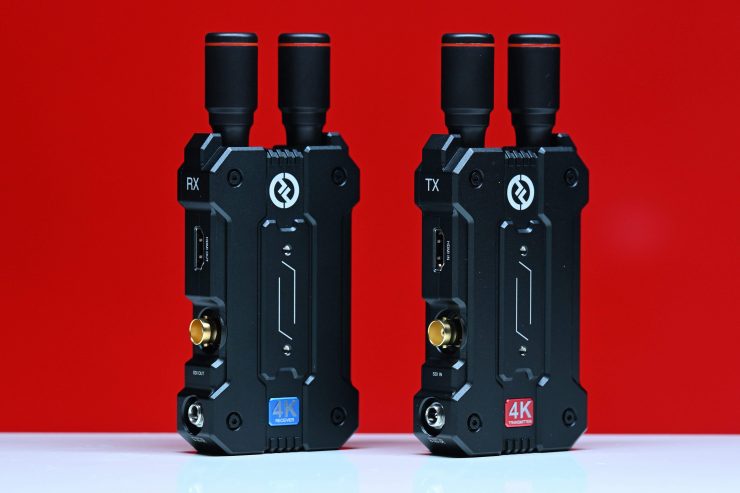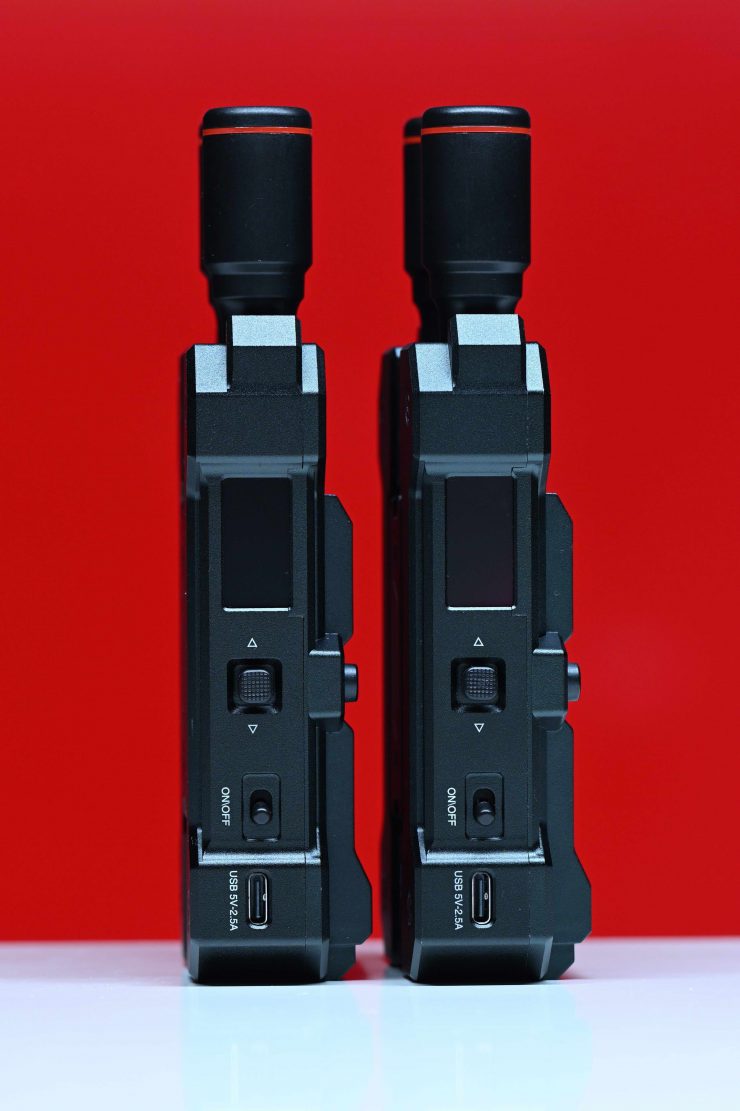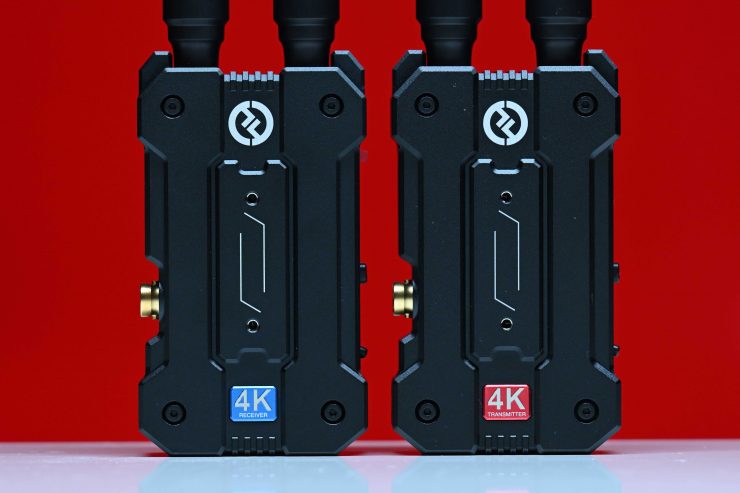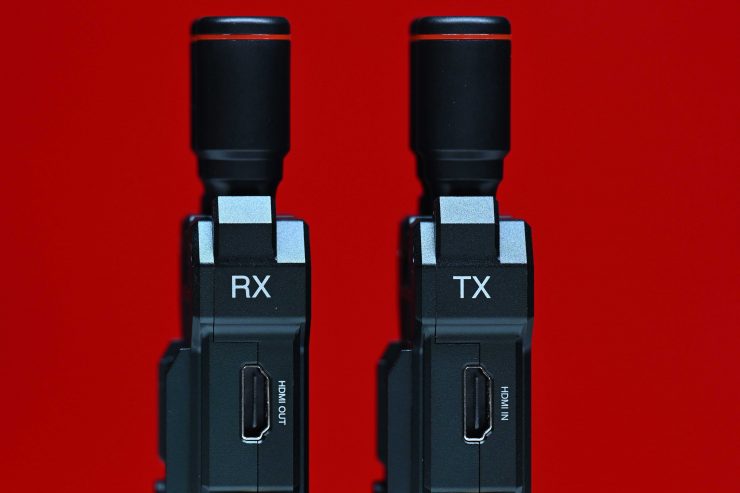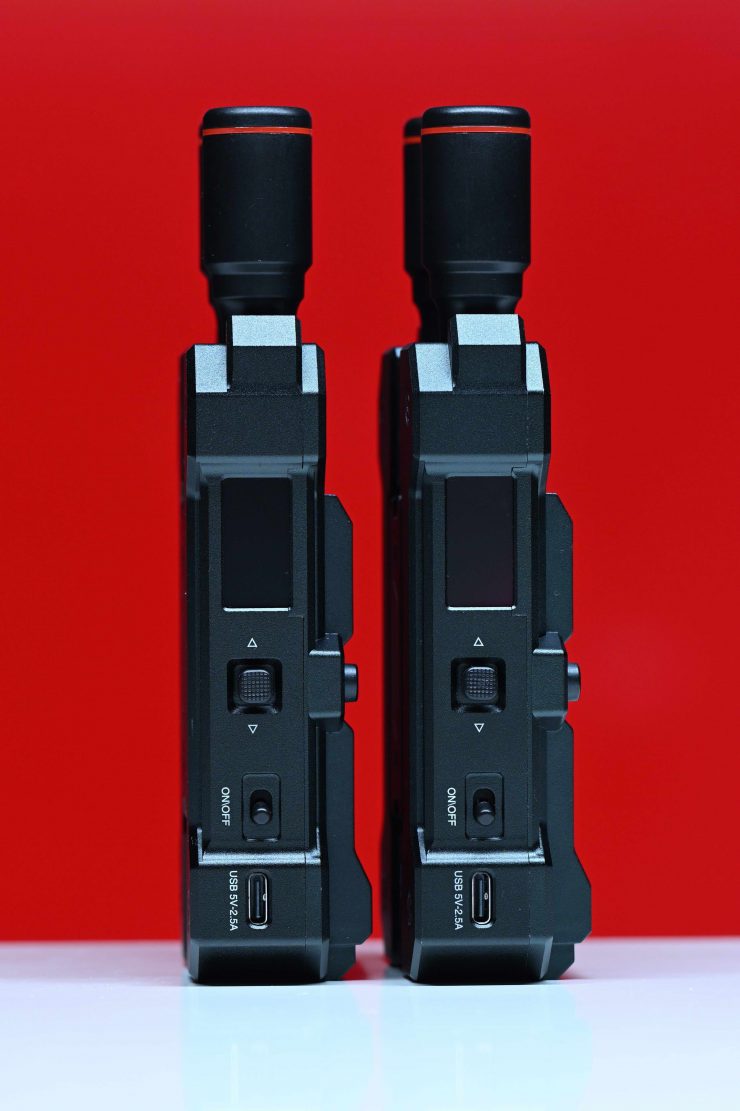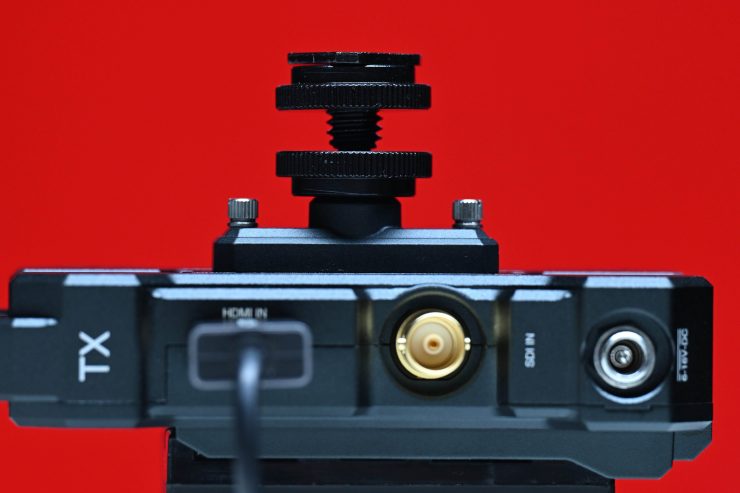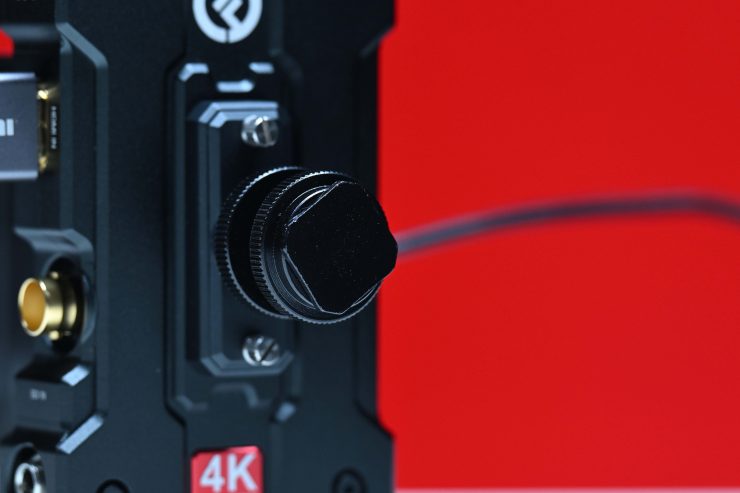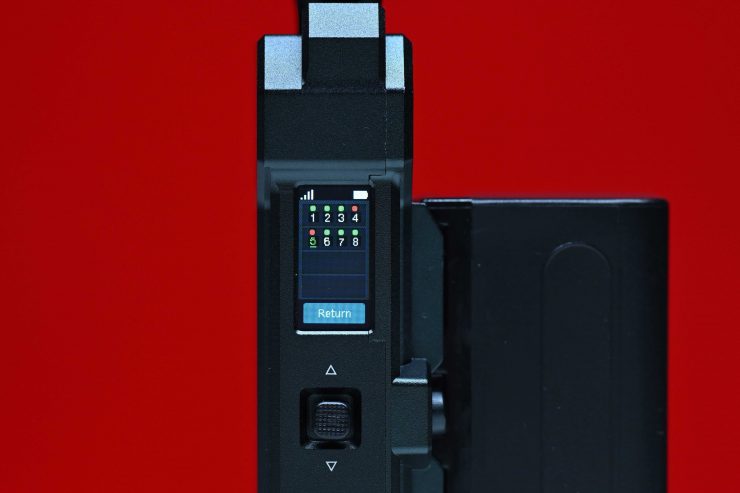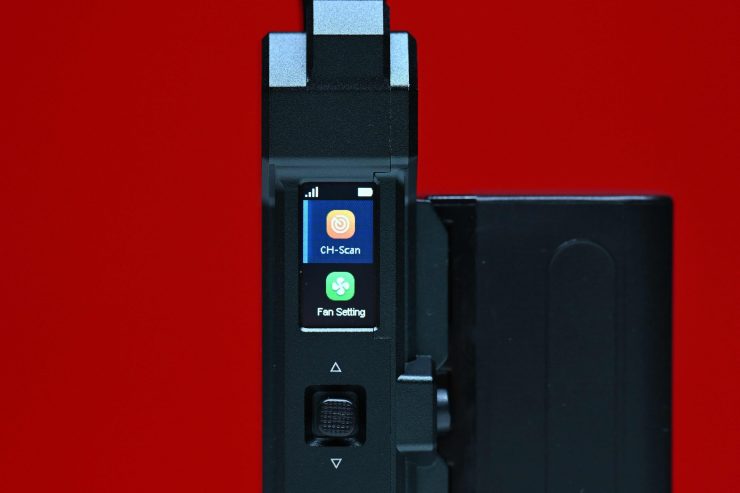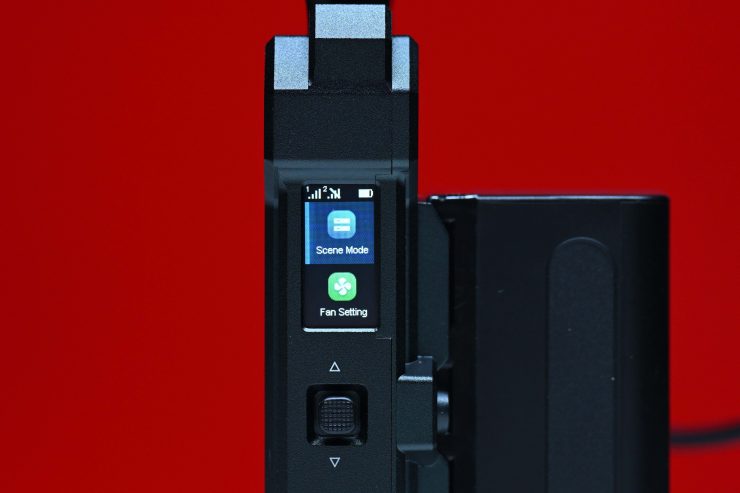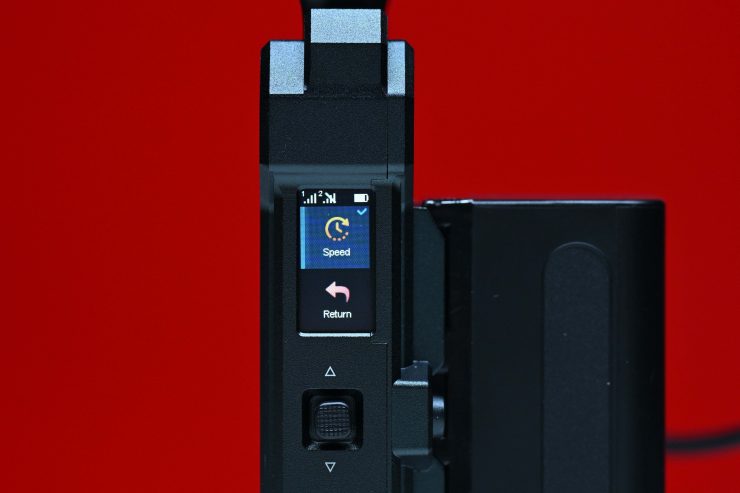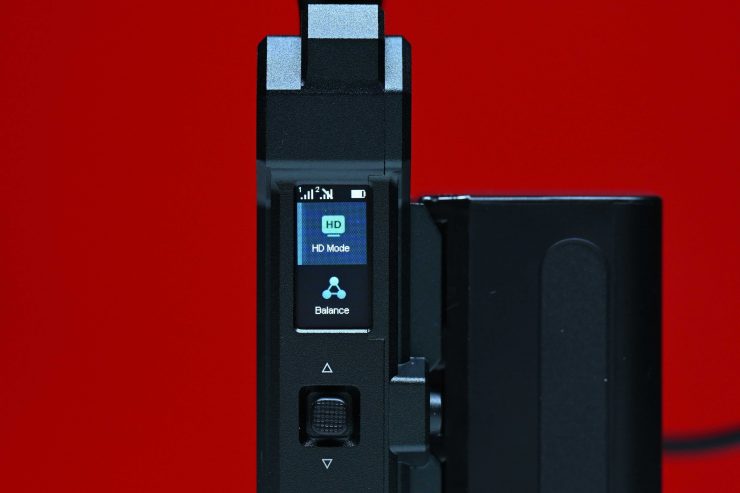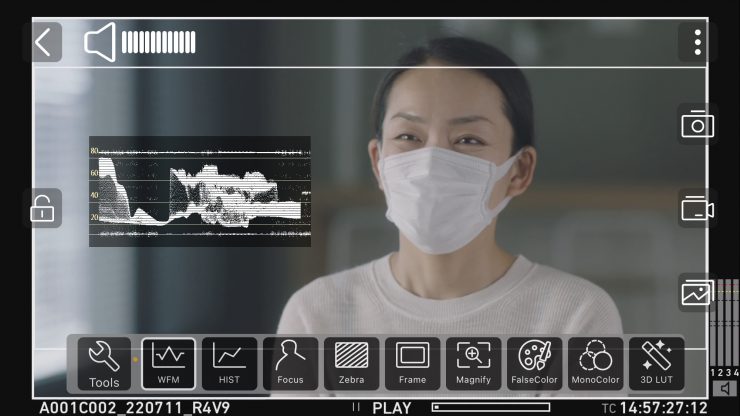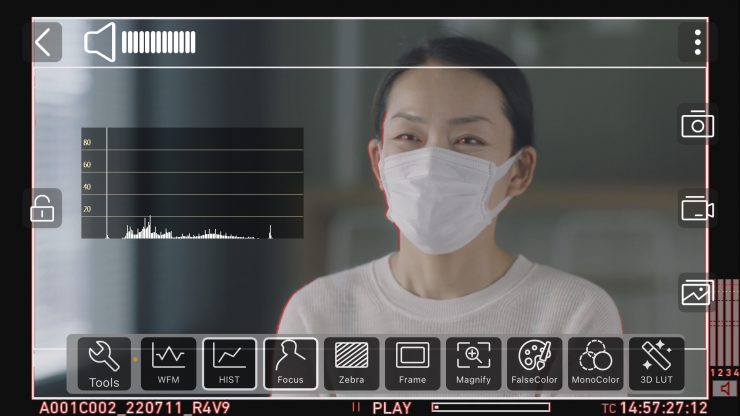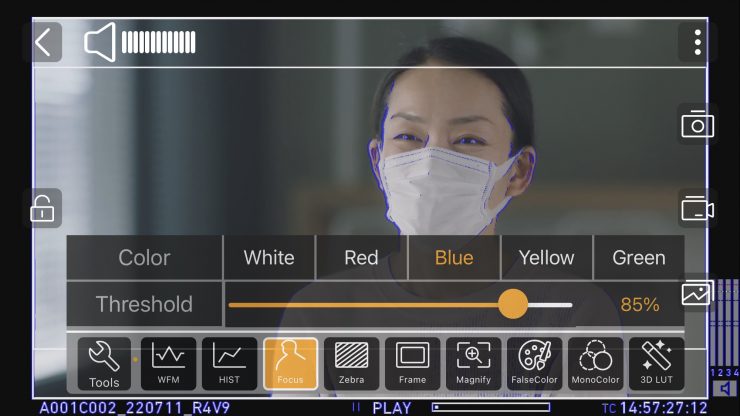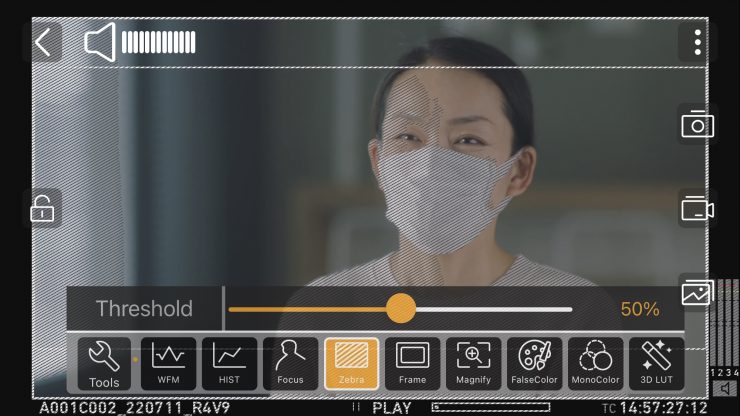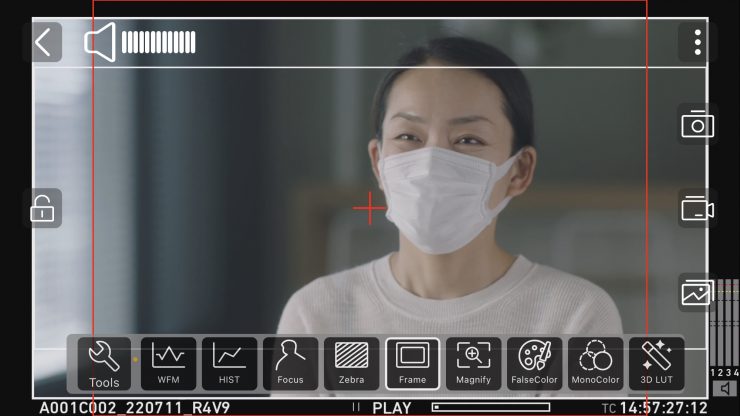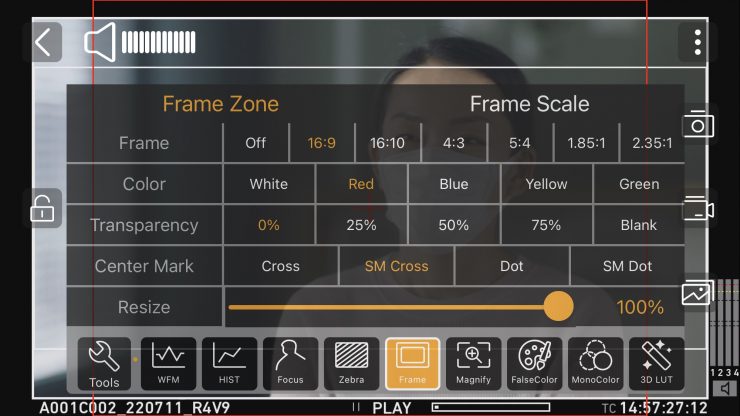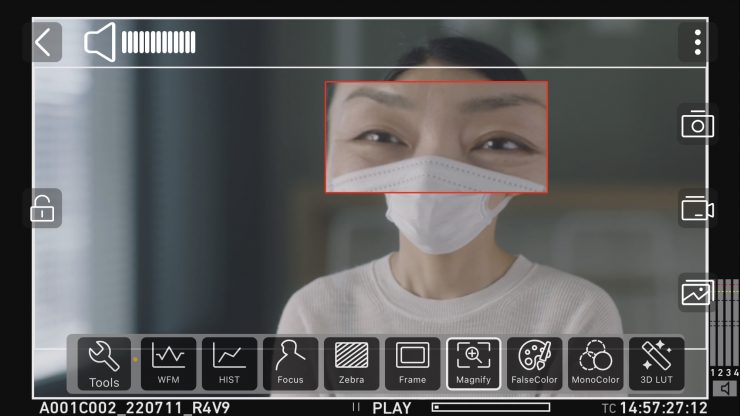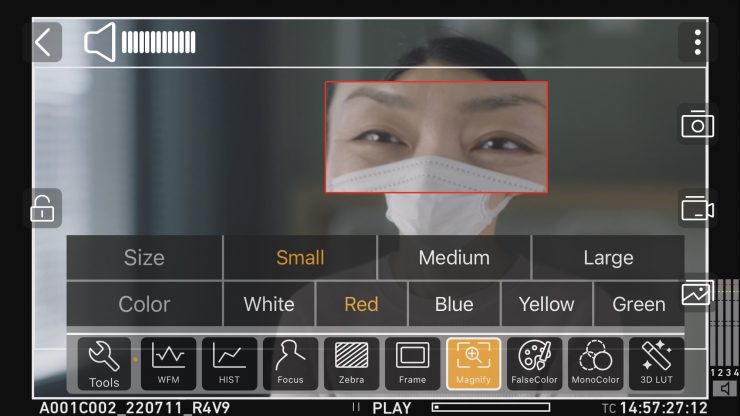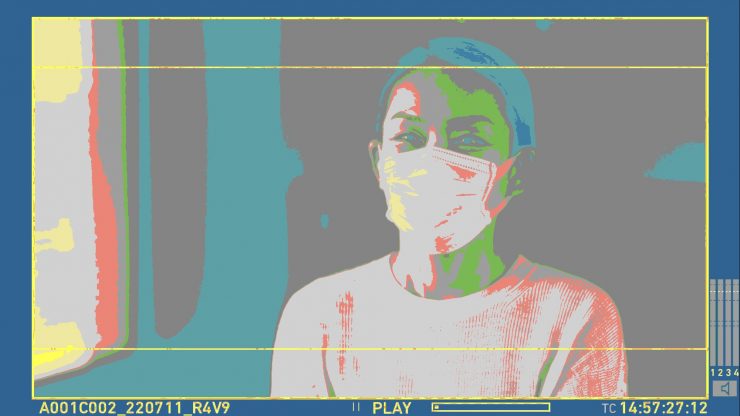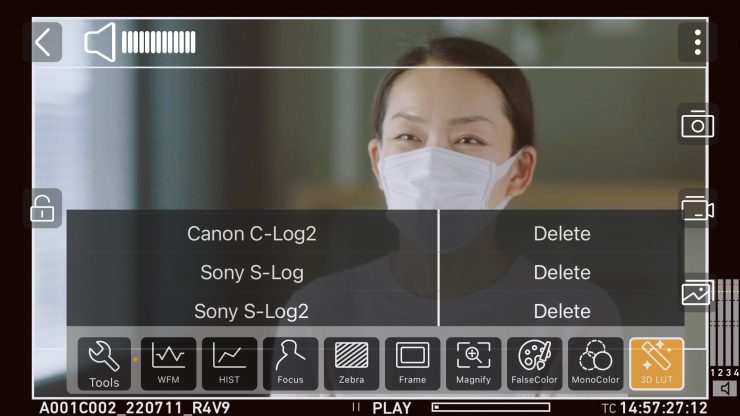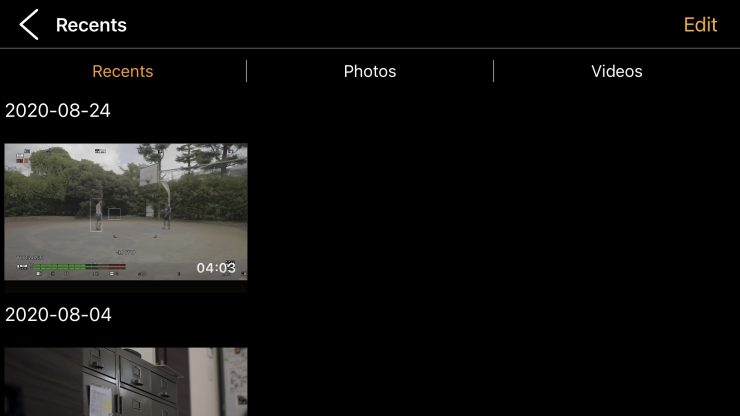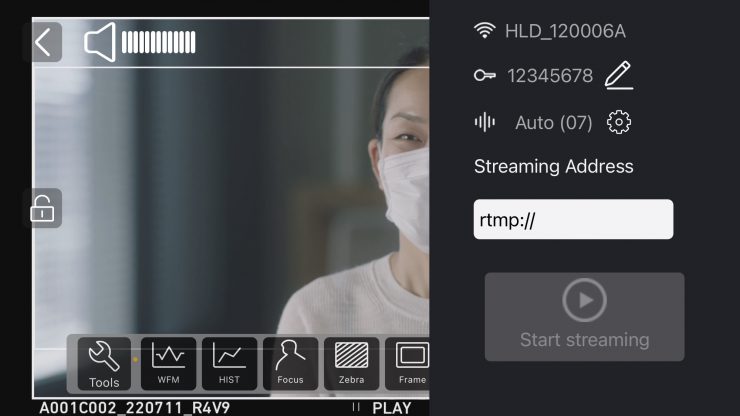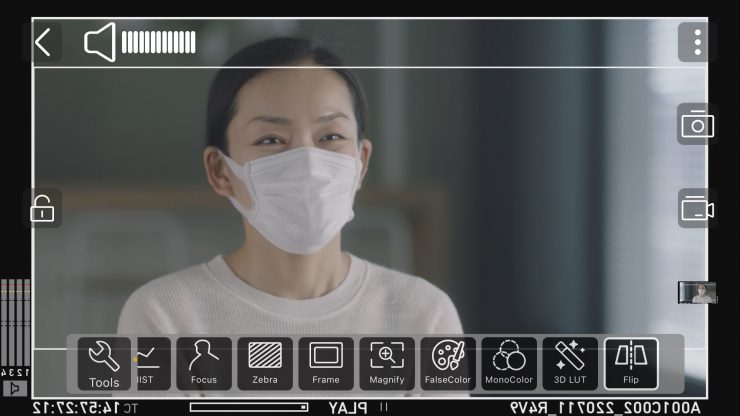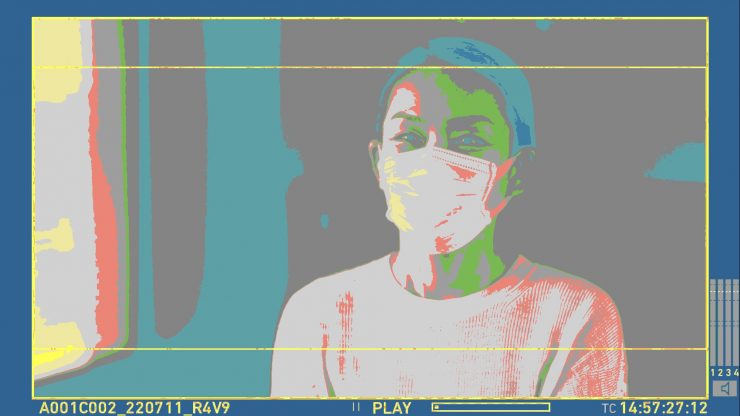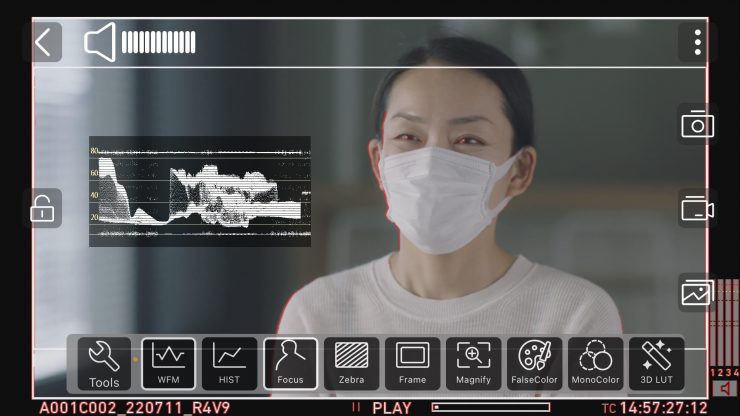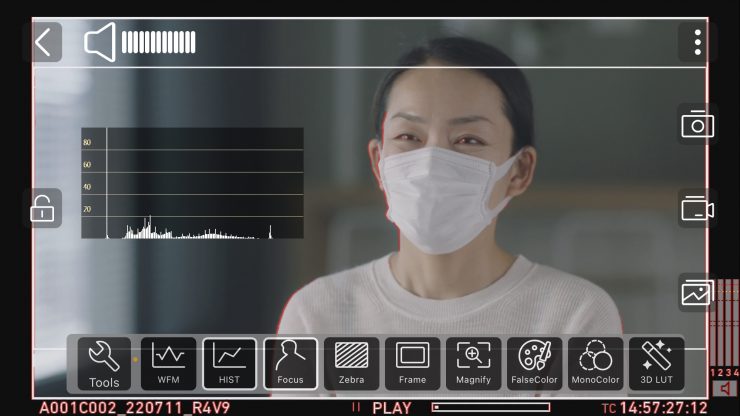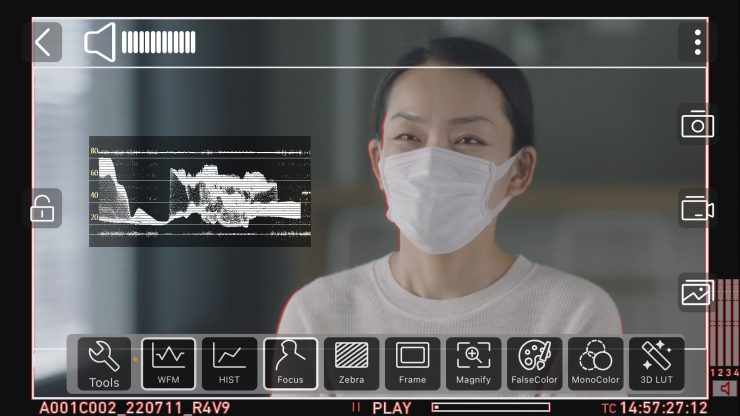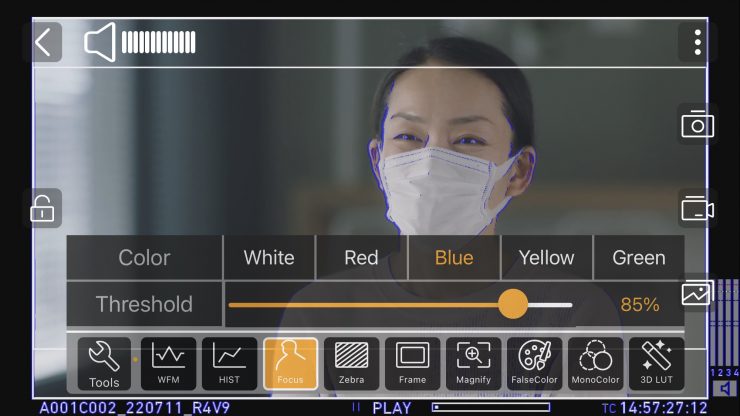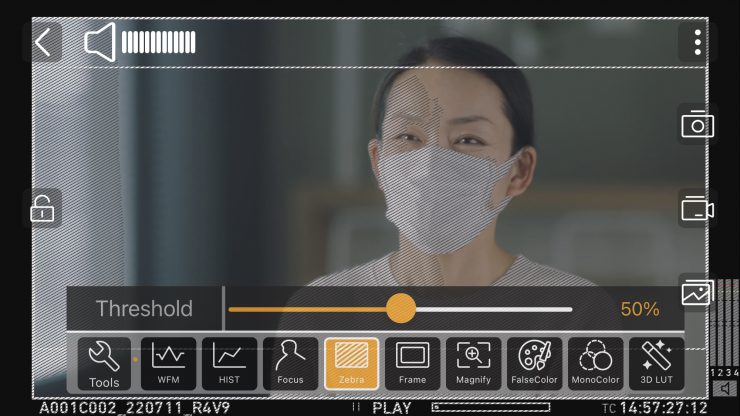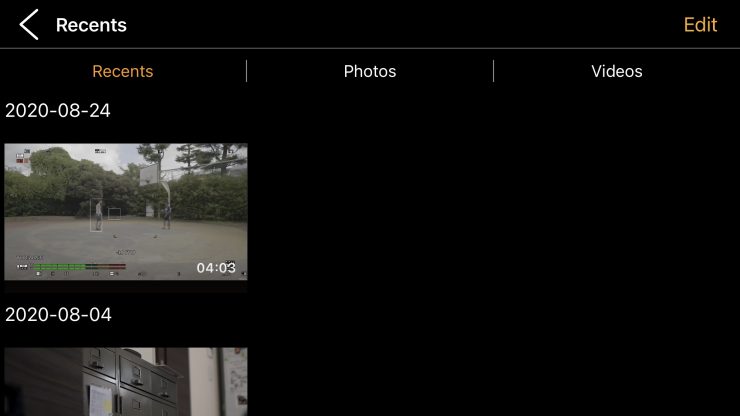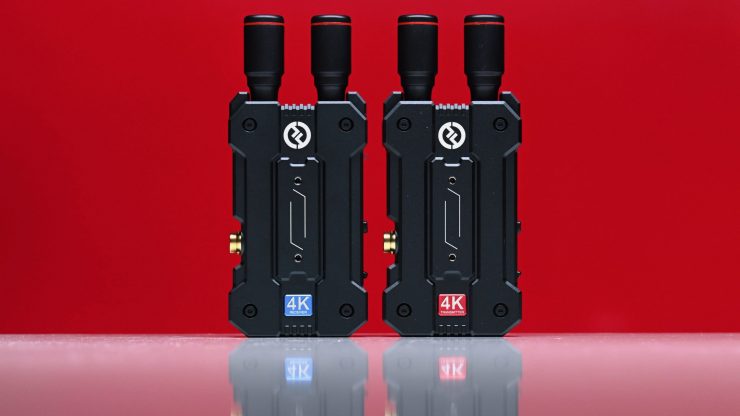
The Hollyland MARS 4K is the first affordable 5GHz wireless video system, at least to my knowledge, that is capable of sending a UHD signal.
The system has a claimed range of 450ft / 150m (line of sight) and a latency of 0.06s. The Mars 4K was designed to combine high performance and reliable quality at an affordable price.
We have seen a ton of affordable wireless video systems come to market over the last few years and a lot of them have very similar feature sets and capabilities. This increased competition has been good news for the end consumer as prices have continued to come down.
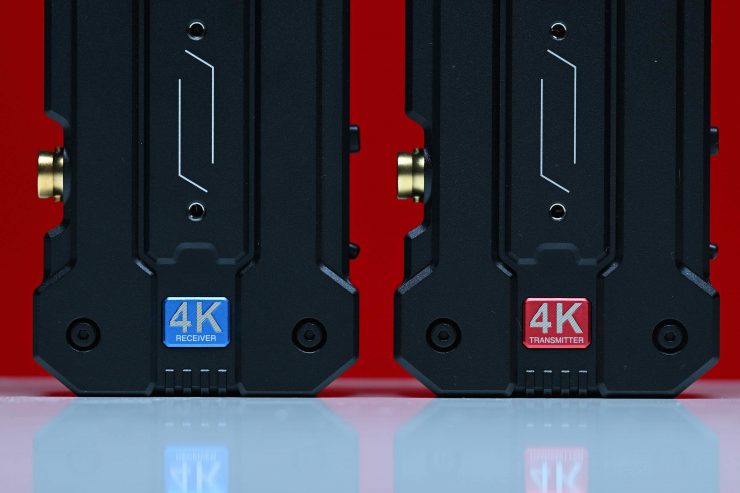
So where it differs from other systems we have seen is that it can transmit and receive 4K UHD video at up to 29.97p. The Mars 4K also supports FHD and HD formats at varying frame rates of 23.98p up to 59.94p.
Key features
- Wireless Video Transmitter/Receiver Set
- Transmitter HDMI/SDI Input, SDI Loop Out
- Receiver HDMI & 2 x SDI Outputs
- OLED Screen, USB Type-C Power Input
- 450ft / 150m Line-of-Sight UHDp30 Transmission
- 5.1 to 5.9 GHz Frequency Range
- AES-128 Encryption, 40 ms Latency
- L-Series Battery Plates on TX/RX
- DC Adapter Power or Optional Battery
Concept
With a large array of ‘affordable’ wireless video transmission systems now flooding the market, Hollyland decided to make something that was a little different from the competition.
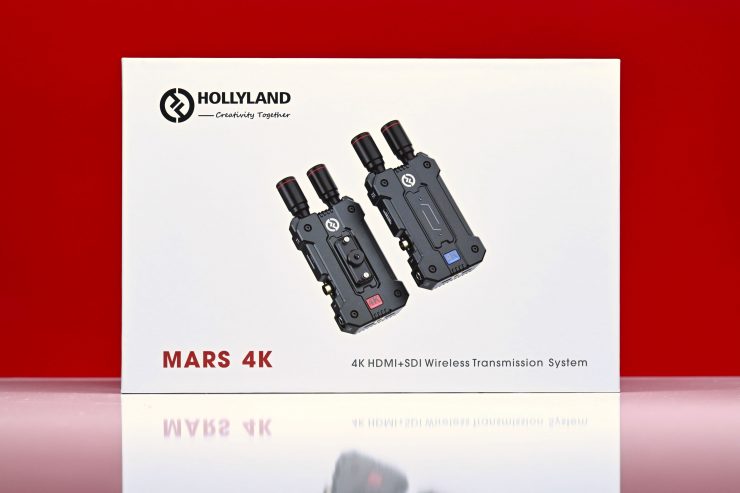
As I already mentioned, the whole concept behind the MARS 4K was to offer uses an affordable, high-quality wireless video system that could send and receive UHD images.
Build Quality
I have reviewed a lot of wireless video systems over the years, and the build quality of even the most budget-friendly options has continued to improve. The MARS 4K is very solidly made. The exterior casing is robust and I wouldn’t think it is likely to break if you dropped it. According to Hollyland, the Mars 4K features superior corrosion and wear resistance for outstanding durability.
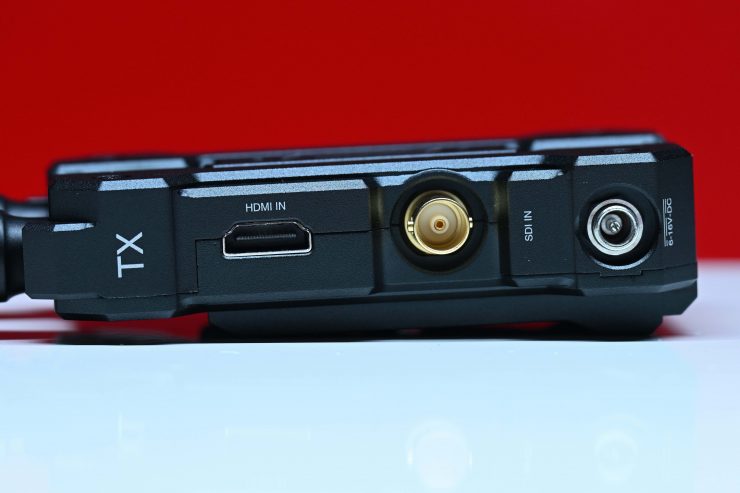
The SDI connectors are slightly recessed, but the HDMI isn’t.
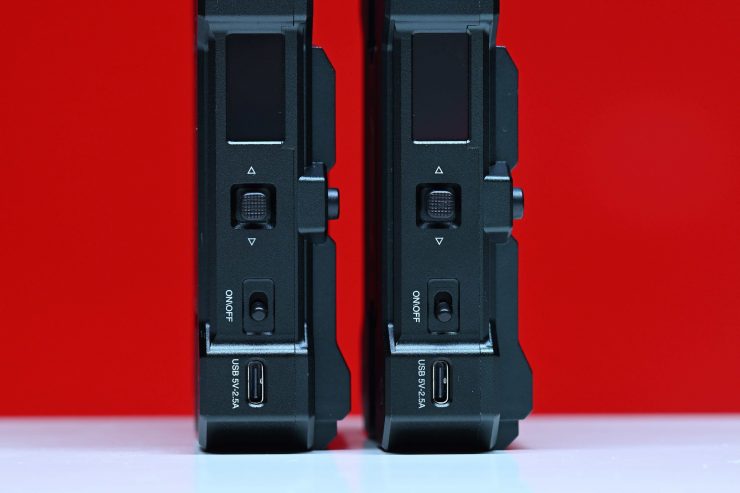
The On/Off switch is reasonably solid and tactile, as is the little joystick you use to navigate and make changes in the menu.
Overall I think most people will be more than happy with the way it has been constructed.
Size & Weight
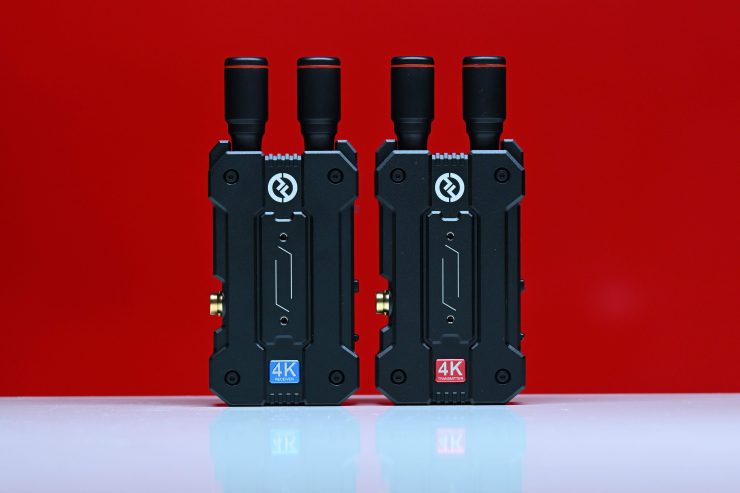
The MARS 4K RX and TX both weigh 223g / 7.86oz without the antennas.
The TX and RX are not tiny, nor are they too big. I would say that they are around a similar size to other comparable SDI/HDMI systems.
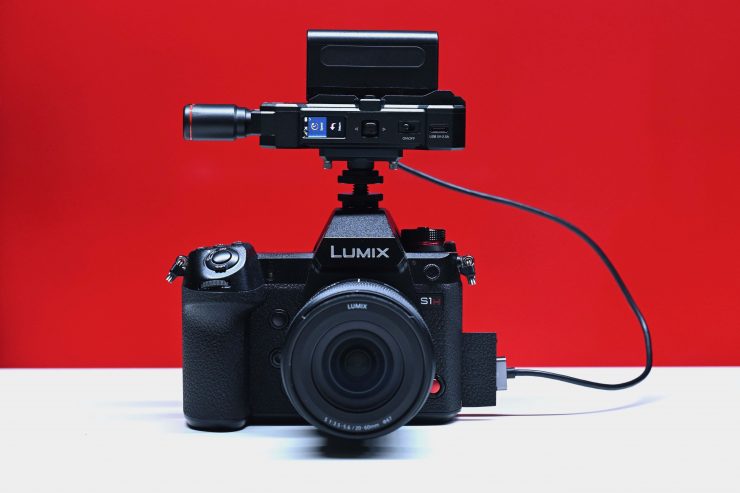
This weight and size may not make them overly suitable for small-sized mirrorless hybrids. I personally think that the MARS 4K would be more at home on small to mid-sized digital cinema cameras as opposed to mirrorless hybrids, although you could use it on some of the larger-sized mirrorless hybrids, or something like a Canon C70.
What do you get?
The MARS 4K comes with the following items:
- MARS 4K Transmitter
- MARS 4K Receiver
- 4 x Antennas
- 1x Cold shoe mount
- 1x USB Type-C OTG Converter
- 2x DC Adapter
- 1x Expansion Accessory
- Quick Start Guide
- Limited 1-Year Warranty
Ins & Outs
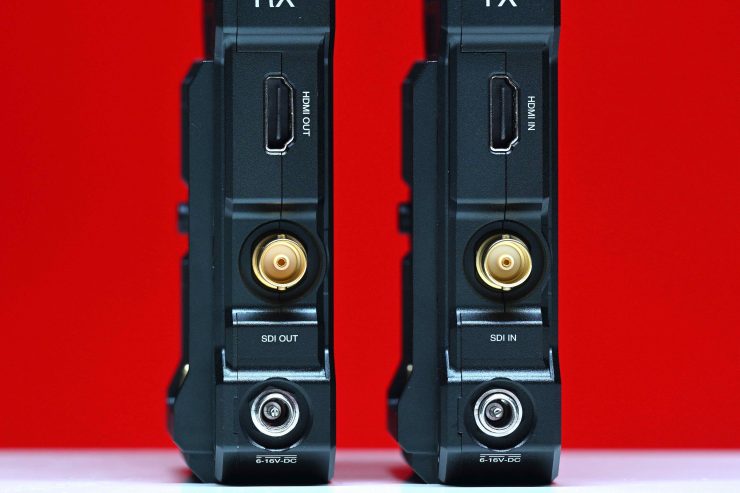
Both the MARS 4K TX and RX units feature SDI and HDMI ports. The TX has an SDI In and an HDMI In. The RX has an SDI Out and an HDMI Out.
Both the RX and TX units have cross-conversion. So you could have an HDMI source coming in and an SDI source going out on the TX unit for example.
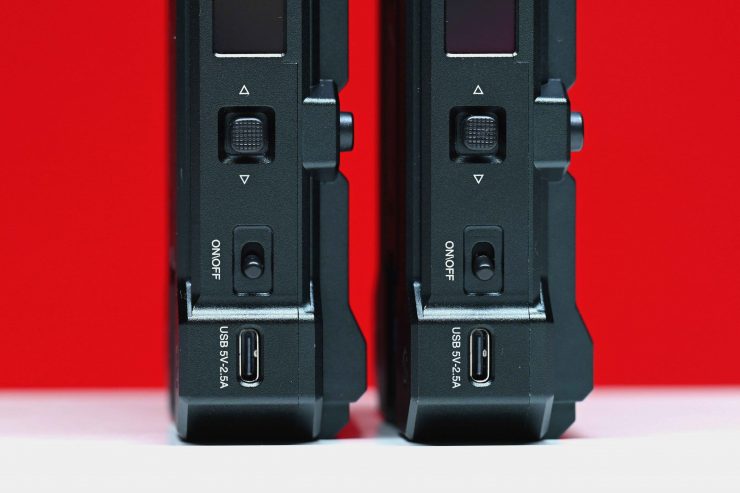
There are also USB-C and DC inputs on both the TX and RX units.
Interface & Transmission
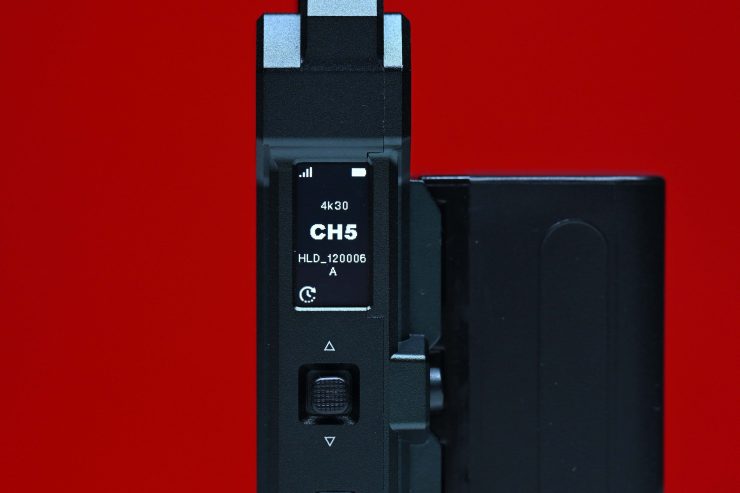
On the right-hand side of the TX and the RX units, there is a color screen with a user-friendly UI design that enables quick configurations and status checks. A rocker-styled button lets you access the menu and make changes.
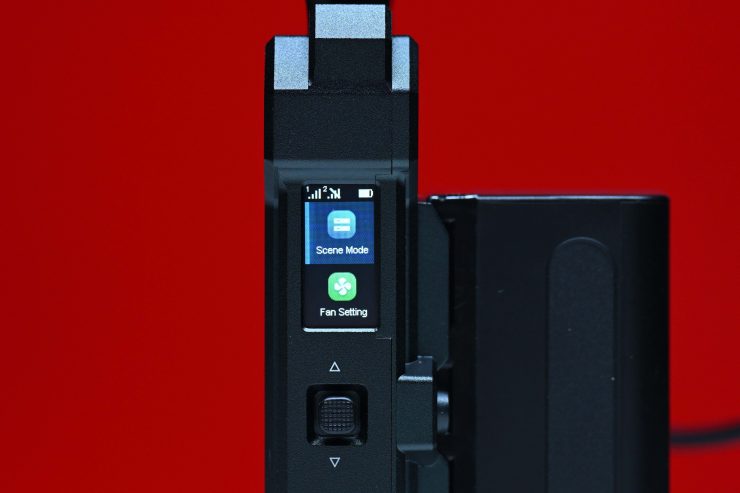
It is good to see somebody doing something different with the display screen and making a UI that shares some similarities with smart devices makes sense.
The MARS 4K utilizes an upgraded dual-core codec chip that is capable of a 12 Mbps data transfer rate. This is a pretty low bitrate. A device like the Teradek SERV 4K can stream at up to 45 Mbps.
The MARS 4K uses synchronous frequency hopping at a claimed speed of 0.001s at both the receiving and transmitting sides. You can use either a manual or auto-switching mode depending on your needs.
Channel assignment options allow for interference-free transmission. A stable connection is established automatically upon startup. A smart channel scan helps determine which ones are occupied and selectable.
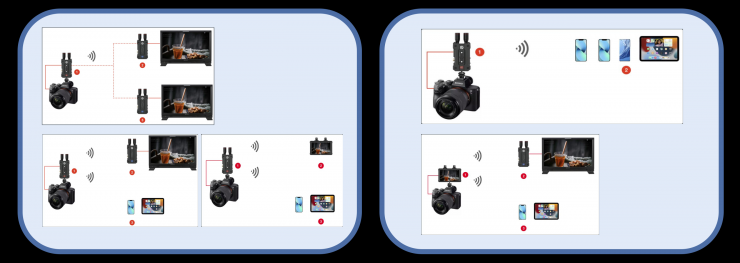
Not only can the MARS 4K send images from the TX to the RX unit, but images can also be viewed on the Hollyland HolyView App as well. Below you can see what options are available:
- MARS 4K TX can transmit to two RX units at the same time
- MARS 4K TX can transmit to one RX unit and two devices running the HollyView App
- MARS TX can transmit to four devices running the HollyView App as long as you aren’t transmitting to a RX unit.
What is interesting is that you can also use a MARS M1 as an RX unit and a MARS 4K as a TX unit. Conversely, you can also use a MARS M1 as a TX unit and a MARS 4K as an RX unit. In both examples, you can also view images on up to two devices using the HollyView App at the same time.
What can you transmit?

As I previously mentioned, the MARS 4K can send and receive signals up to UHD 29.97p over HDMI and FHD up to 59.97p over SDI.
If you are using a camera that can output UHD over HDMI then you will be able to view a proper UHD image on a UHD display.
Antennas
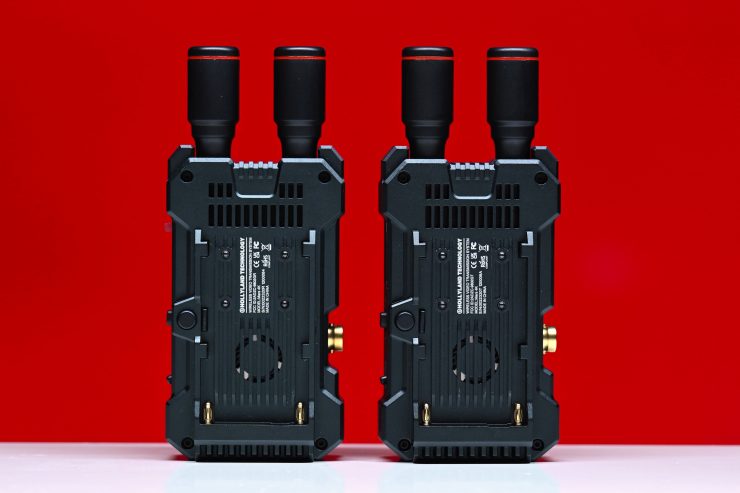
Both the TX and RX units feature slightly recessed antenna connection points.
I like that the MARS 4K utilizes small-sized antennas so that the overall footprint of the units is kept to a minimum.
Mounting Points
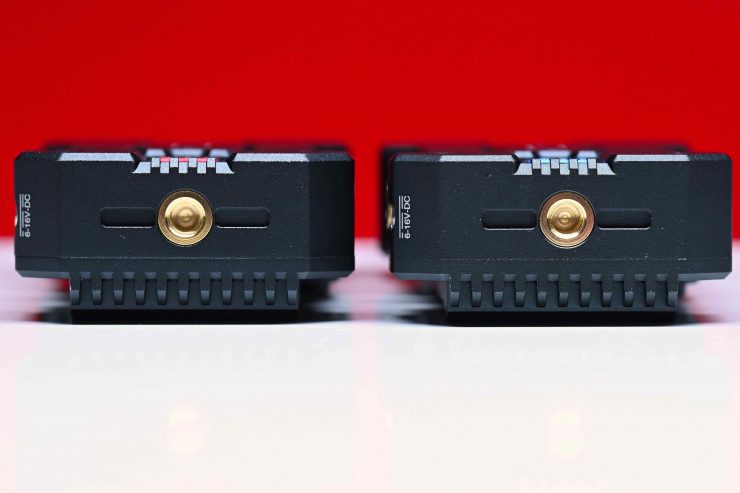
Hollyland has included a single 1/4 20″ mounting hole on both the TX and RX units. It is located on the bottom of both units.
On the front of the TX and RX, there is a mounting spot for the included cold shoe.
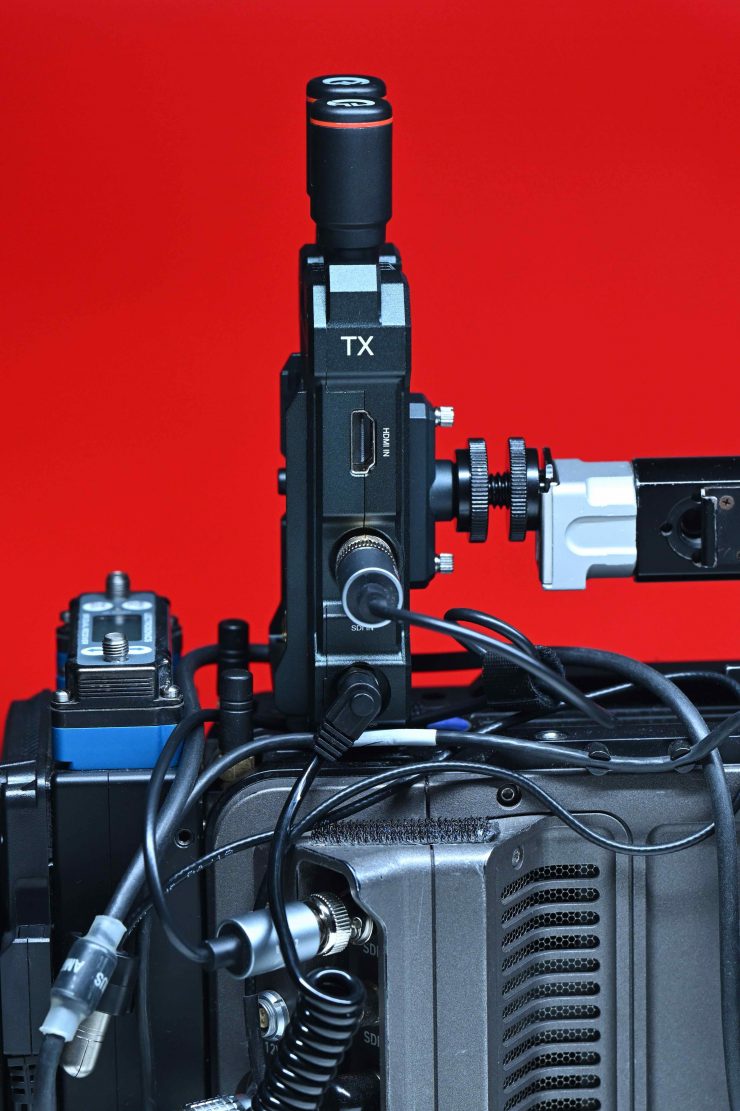
While the cold shoe mount works reasonably well, it is a little strange that Hollyland only gives you one cold shoe mount adapter and not two.
Power
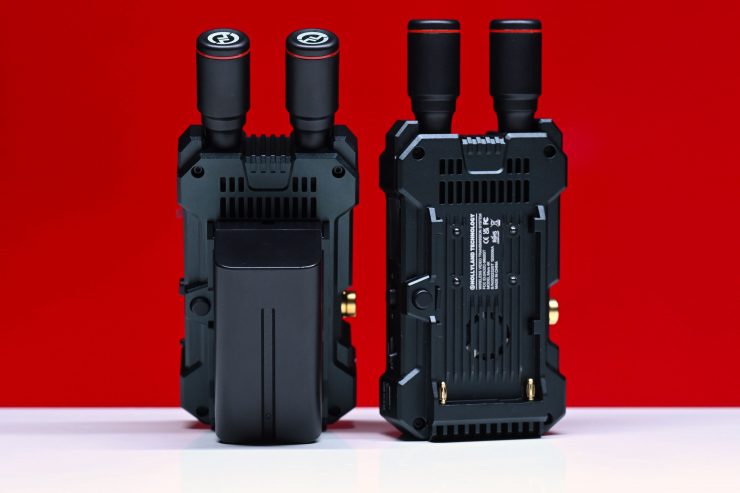
The MARS 4K RX and TX units both have in-built battery plates that can take Sony NP batteries. You also have the option to power it through a 6-16V DC input, or via USB-C. These powering options are consistent with other Hollyland products they have recently released.
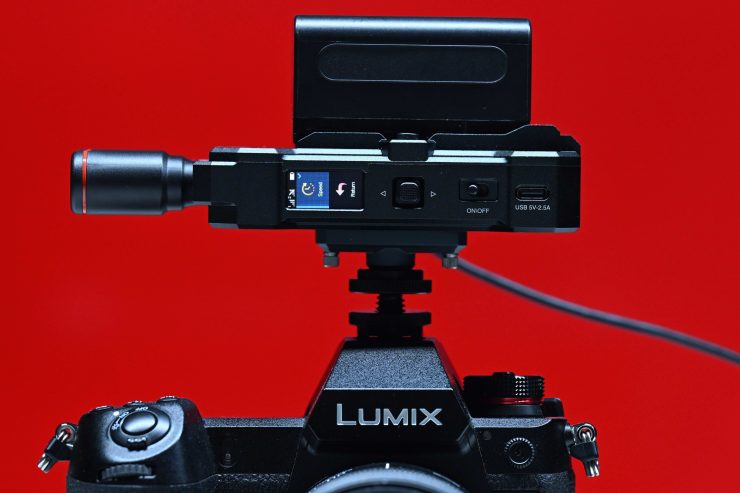
The battery plate is well made and batteries don’t move or wobble around.
It is nice that Hollyland gives you three ways of powering the device. Having in-built batteries would have kept the size down, but most professionals don’t want devices with built-in batteries unless they are able to power a unit for a considerable amount of time.
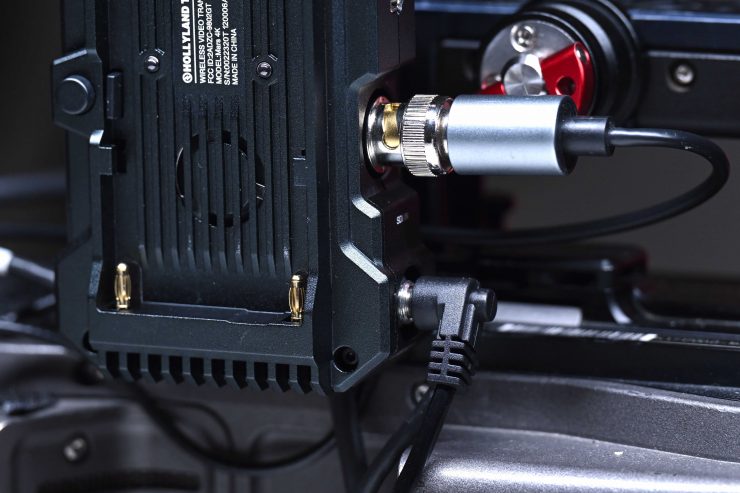
Running the MARS 4K with a Sony NP battery on a small to mid-sized digital camera isn’t going to make it overly heavy. I personally prefer to power wireless video systems directly from my camera, but that’s just the way I do it.
What is nice is that you hot-swap power sources if you happen to have two connected at once. For instance, If I have the battery on and I then want to suddenly want to swap to a DC power source I can simply take off the battery without the MARS 4K shutting down.
I would have liked to have seen Hollyland include a DC to D-tap power cable in the kit, instead of an AC power supply. However, they do sell one as an optional extra.
Fan Noise
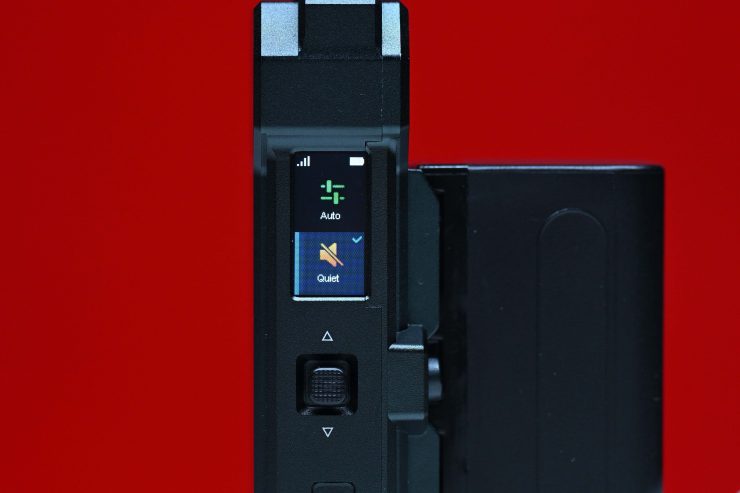
Both the TX and RX units have an in-built fan. The fans do make a little bit of noise and if you have it too close to an onboard microphone you may well pick up a bit of noise. Hollyland does give you the option to change the fan from Auto to Quiet in the menu and then the unit almost runs silent.
Even after having both the RX and TX units on for a considerable amount of time they didn’t get hot.
Encryption
The system uses AES-128 Encryption when sending wireless signals so that your vision can’t be seen or accessed by anyone else.
Setup & Ease Of Use
As I always say, a good wireless video solution should be easy and fast to set up and get running. In all honesty, this shouldn’t be a difficult task, and if it is, then, in my opinion, the product has already failed.
The MARS 4K is virtually plug-and-play. You just power up the TX unit, input a video source and then power up the RX and hook it up to a monitor.
All you need to do is make sure that the TX and RX unit is on the same channel, however, the system will automatically select the same channel on both the TX and RX automatically for you. Once everything is powered on I got a picture within around 20 seconds. 20 seconds was a little slow for a wireless system.
I also like that you can do a manual channel scan to see what the best available channels are to use.
On the TX unit you can also choose to select between HD, Speed and Balance.
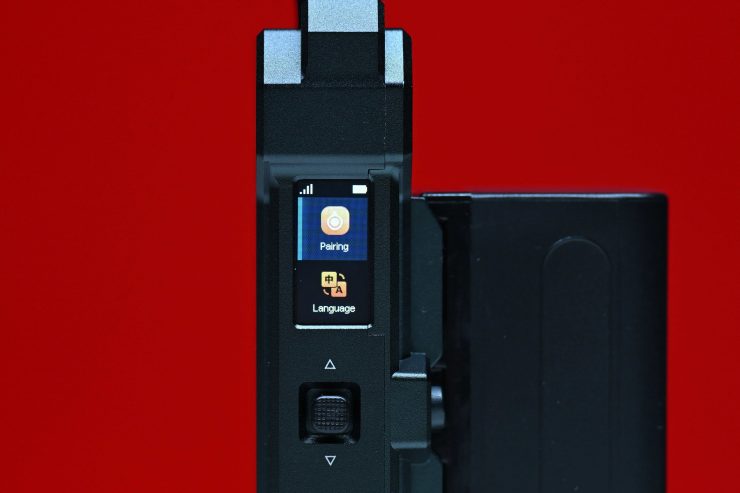
There is also a manual pairing section in the menu if you need to re-pair devices or pair new devices.
So, what about if you start pulling cables out or turning the TX and RX on and off gain? These are real-world things that happen and you need to test how the system works by seeing how quickly it can re-establish connections. If I pulled the SDI or HDMI cable out of the TX unit it took roughly 2 seconds for the image to re-establish.
If I suddenly changed the framerate on the camera, it took around 4 seconds for the RX to re-establish the connection.
Ok, what about if I turn the RX unit off and turn it back on again? It took roughly 23 seconds for an image to re-appear on the connected monitor.
The MARS 4K was reasonably good at re-establishing a signal and getting up and running again if any changes were made. This was good to see.
HollyView app

The app features some nice functionality, and it is reasonably easy to use.
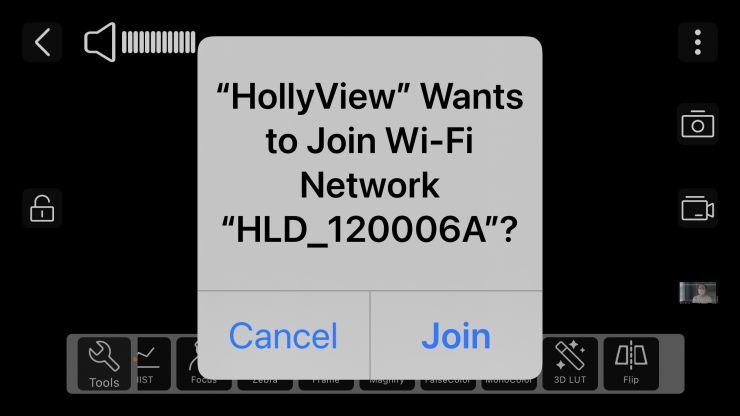
It is pretty easy to get started. You only have to select the Wi-Fi network once when you first set up the app and then it will automatically ask you if you want to join that network when you open the app.
While there are quite a lot of monitoring assist tools, the app is missing items such as anamorphic de-squeeze and vectorscope. Apart from that, I think most people will be reasonably happy with the tools and features that are available.

You can focus magnification by pinching to zoom directly on the screen. however, I did find it a little laggy.
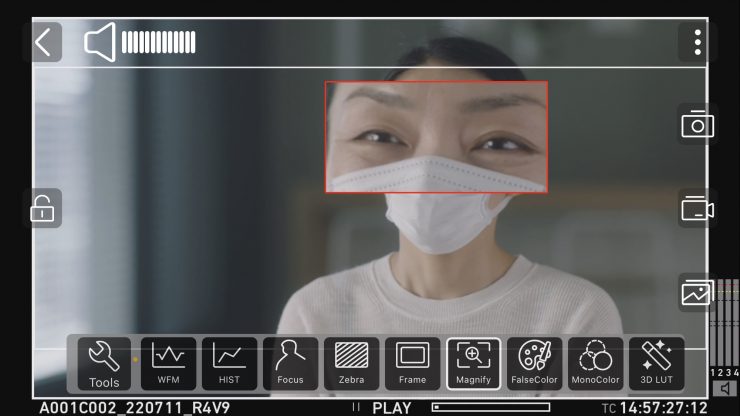
Alternatively, you can press the image zoom icon and then you can move the focus magnification box around the image.
There is false color and a waveform, but there are no values available for the false color.
With the waveform and histogram scopes, you can move them around to any position you like on the screen, however, there is no way of changing their transparency or size.
There is also peaking and zebras and you can change the intensity and color of the peaking, but only the intensity of the zebras.
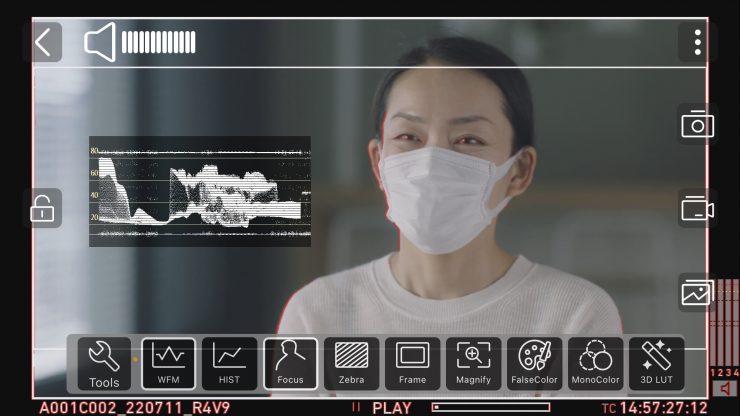
You can put multiple view assist tools up at the same time if you need to.
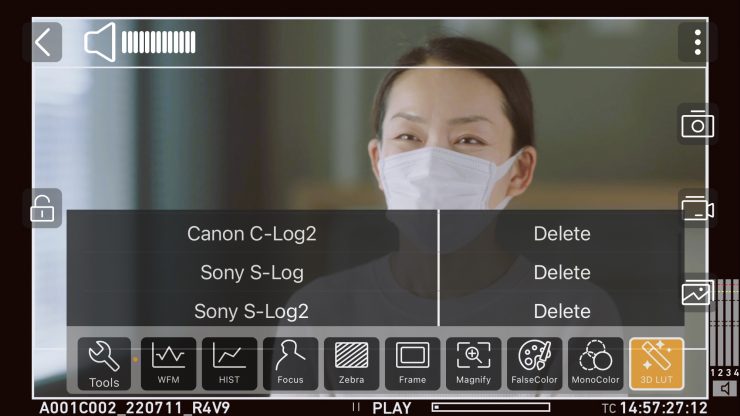
There are a few default LUTs available in the app, but only for Sony and Canon cameras. From what I understand, you can’t load up any of your own LUTs.
I like that you can actually record the video or take still images directly within the app. While this isn’t great quality it does allow you to view back clips and also upload something to social media if need be.
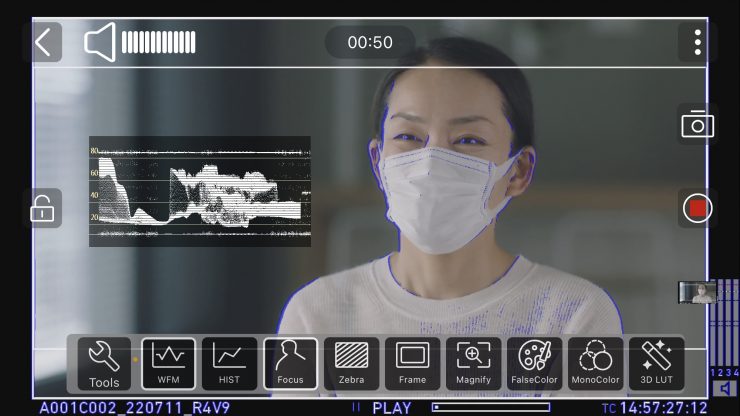
What is nice is that you can still do the image zoom and access the monitoring tools while it is recording.
Image Delay
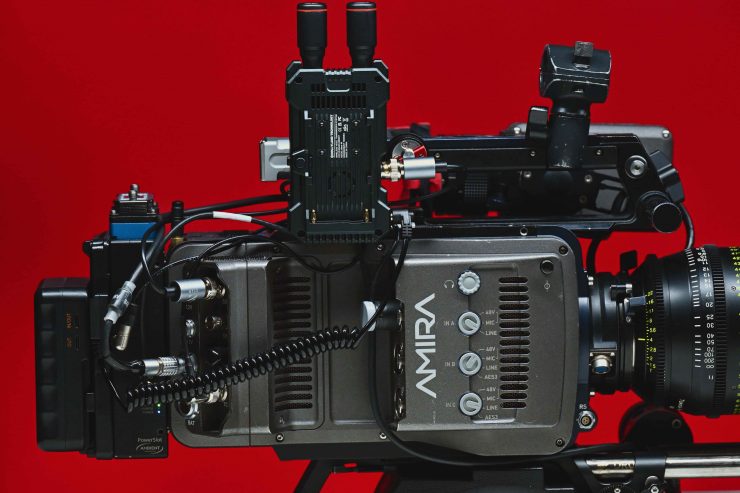
Zero (or close to) image delay is one of the big reasons you pay more money for a higher-end system. Most high-end wireless video systems have basically zero latency, while a lot of the budget systems can have quite a lot of latency, especially those systems using HDMI. Hollyland claims that the MARS 4K has a latency as low as 60ms but they don’t state how they are measuring or coming up with that figure. So let’s find out what the latency actually is.
SDI
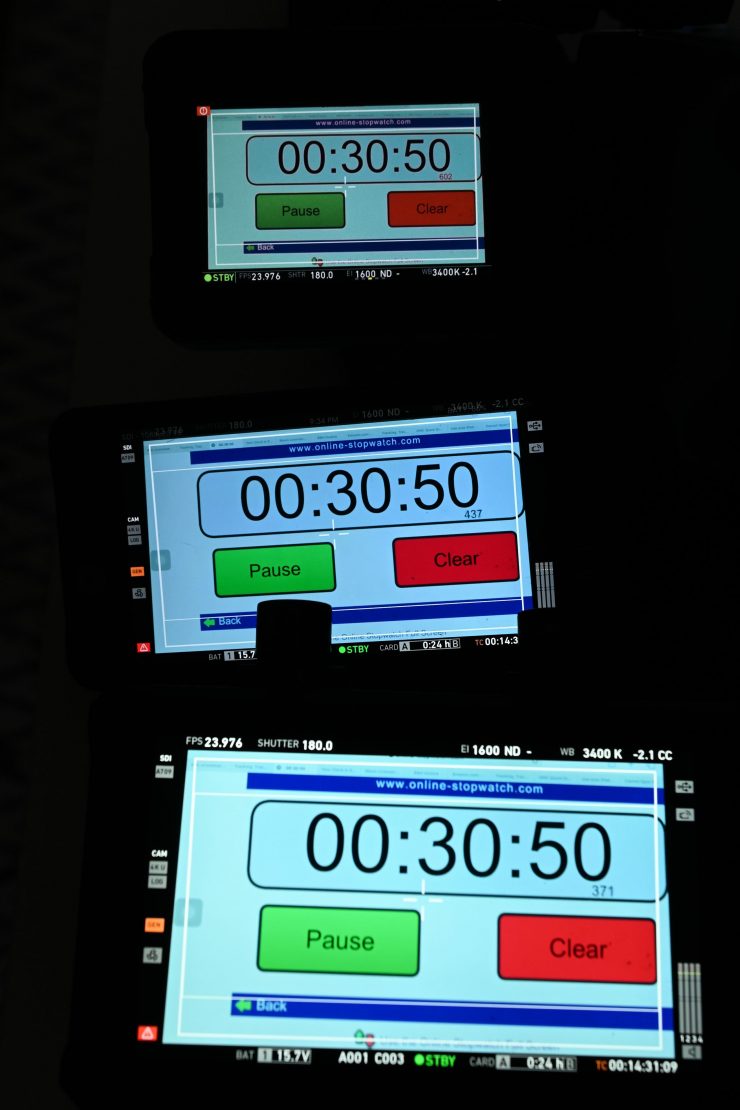
Ok, so let’s try using SDI first. I measured the delay average over a series of three tests at 164.33ms when viewing images on a monitor connected to the RX when the TX was set to Speed mode. This was using an ARRI Amira.
What do these figures actually mean? Well, anything below 100ms is considered to be low, because most humans don’t perceive a delay that small. Once you get over 100ms we perceive a noticeable delay. 164.33ms is certainly high, but the tests don’t lie. I recently tested the Accsoon CineView Quad and in this exact same test the result was 181.66ms.
| RX VIEWING LATENCY | |
| Hollyland MARS 4K | 164.33ms |
| Accsoon CineView Quad | 181.66ms |
| Vaxis Atom 500 SDI | 140ms |
Above you can see a latency comparison between a couple of other similar wireless transmission systems that have SDI.
So what about if you use the HollyView app? I measured the delay average over a series of three tests at 64.66ms with the TX set to Speed mode. These results clearly show that the latency is actually way less when using the app than it was if you used the TX and RX units together. Yes, I know that the app should theoretically be a lot better when it comes to latency, but the difference between the app and the output from the RX was massive. As a comparison, when I ran the exact same test using the Accsoon CineView Quad I got an average latency of 51.66ms.
| APP VIEWING LATENCY | |
| Hollyland MARS 4K | 64.66ms |
| Accsoon CineView Quad | 51.66ms |
| Vaxis Atom 500 SDI | 71ms |
Above you can see a latency comparison between a couple of other similar wireless transmission systems that have SDI.
Above you can see what the delay looks like when you use the Speed Mode and SDI. You can see the delay from the camera screen, to the monitor connected to the RX, to what is being seen on the App. The screen for the camera is at the top, the output from the RX is in the middle, and the app is at the bottom.
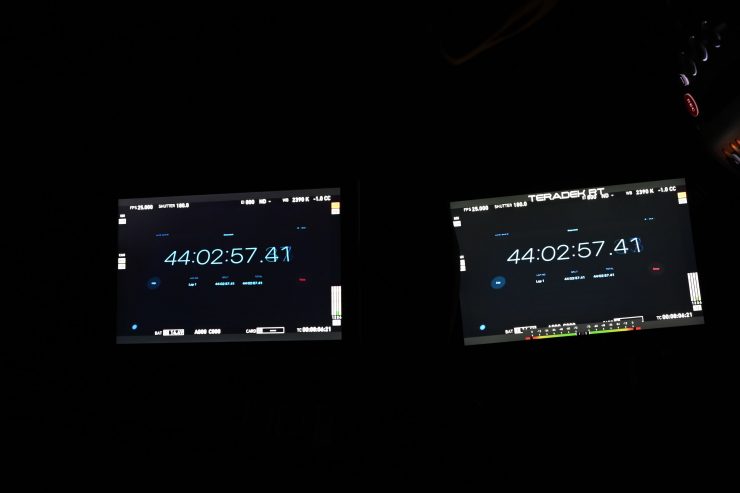
As a reference, above you can see that there is zero latency when using an expensive Teradek system (well, as close to zero as you can get. No wireless system is really zero in the scientific sense). This is a prime example of why you pay more money for a high-end wireless video system.
HDMI
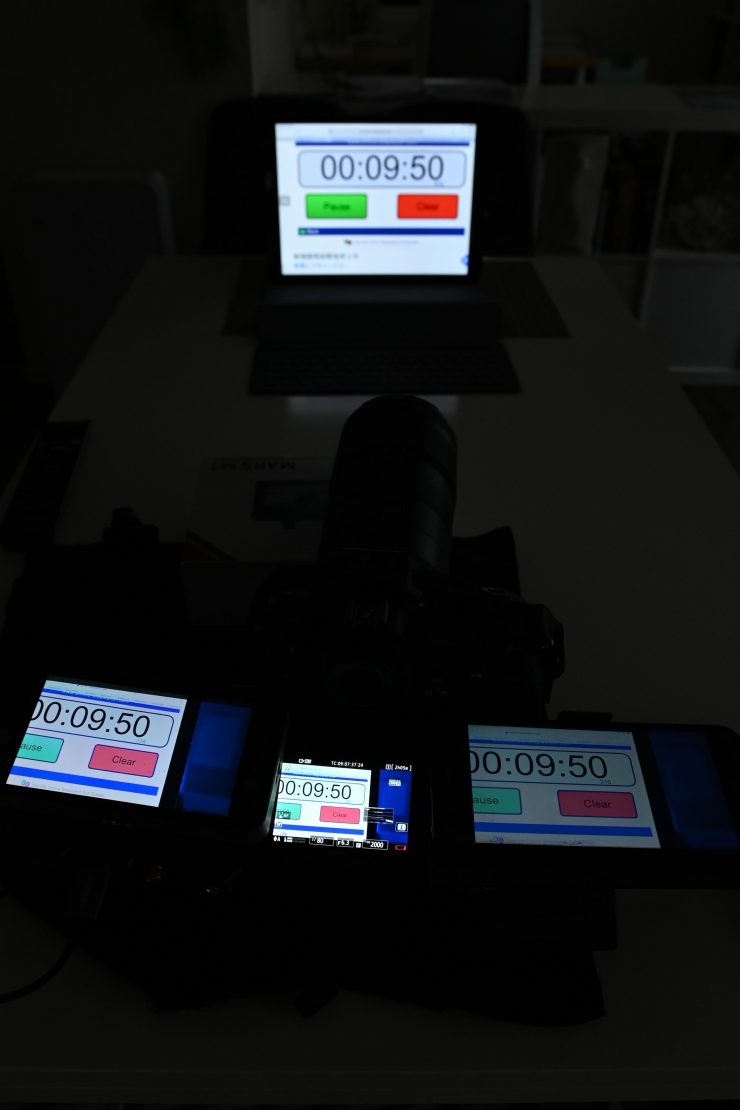
So what is the delay like if we use a camera that only has an HDMI output like a mirrorless hybrid such as the Nikon Z9? I measured the latency over a series of 3 tests when viewing images on a monitor connected to the RX unit when the TX set to Speed mode at 153.66ms.
| RX VIEWING LATENCY | |
| Hollyland MARS 4K | 153.66ms |
| Accsoon CineView Quad | 145ms |
| Vaxis Atom 500 HDMI | 80ms |
Above you can see how this latency compares to the Accsoon CineView Quad and Vaxis Atom 500 HDMI.
I then measured the delay average over a series of three tests at 76.66ms when using the app with the TX set to Speed mode. These results were ok, but I would prefer to see a lower figure. The latency on the HollyView app was almost half that of the monitor attached to the RX unit, however, neither result was particularly good.
| APP VIEWING LATENCY | |
| Hollyland MARS 4K | 76.66ms |
| Accsoon CineView Quad | 51.66ms |
| Vaxis Atom 500 HDMI | 80ms |
Above you can see a latency comparison between a couple of other similar wireless transmission systems that have HDMII.
What you clearly need to remember about any camera that uses HDMI is that the image delay will vary dramatically depending on what camera you are using.
Above you can see what the delay looks like when you use the Speed Mode and HDMI. You can see the delay from the camera screen, to the monitor connected to the RX, to what is being seen on the App. The screen for the camera is in the middle, the output from the RX is on the left, and the app is on the right.
Thoughts on image delay
When using SDI the results were fairly similar to when using HDMI. You are not going to get the same sort of results as you will with an uncompressed, zero-latency system. At the end of the day, there needs to be an acceptable limit that you are willing to tolerate. I think when using an app people can forgive higher latency, but if you are using dedicated TX and RX units it really needs to be below 100ms. When I say below 100ms, that is for ‘affordable’ budget systems. For high-end systems, it should be almost zero.
The latency of the MARS 4K when sending an SDI signal to the TX unit and then viewing on the Hollyview App was not great, but in saying that, it was similar to other systems that I have tried. Could you use it to pull focus remotely? Possibly, but if that is your main intent you would still be better off with a zero-latency uncompressed system.
Latency figures are a bit like dynamic range figures in that manufacturers like to quote numbers that are not explained or quantified.
Real-world performance
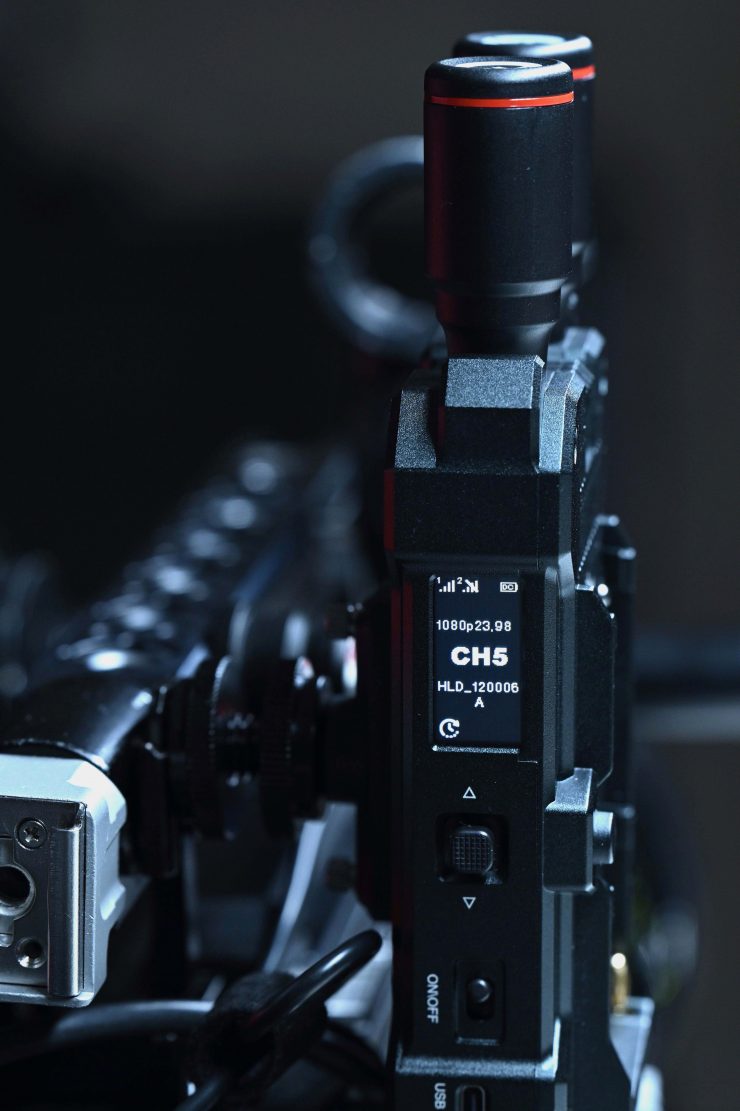
Pulling out connectors, changing settings, and turning receivers and transmitters on and off is one thing, but how does it actually perform in the real world?
How about the operating range? The real transmission distance is relevant to the current air electromagnetic environment, because the system works in the ISM band, and therefore has exposure to all kinds of 5GHz band air interference.
With this in mind, I decided to test the range and performance of the system. To test the range of the system I remained in line of sight of the MARS 4K TX and started walking away with the MARS 4K RX attached to a monitor. I found that I could get around 170m / 557′ and still have a stable signal.
Now, Hollyland claims a maximum operating range of 150m /450′ Line-of-Sight line-of-site, but this is usually only going to be achievable on flat, open terrain where there is little wireless interference. I did this test in the middle of Tokyo which is one of the most heavily congested RF and WiFi traffic areas on the planet. I didn’t expect the MARS 4K to reach its claimed operating distance in this environment, but it did.
When I tested the MARS 4K TX sending a signal to my iPhone running the HollyView app I could only get around 50m / 164′ before the signal disappeared.
Whenever I review wireless video transmitters I do the test in the exact same place under the same operating conditions. This way I get a good idea of how various competing systems compare.
Do you really need a wireless system that can transmit and receive UHD images?
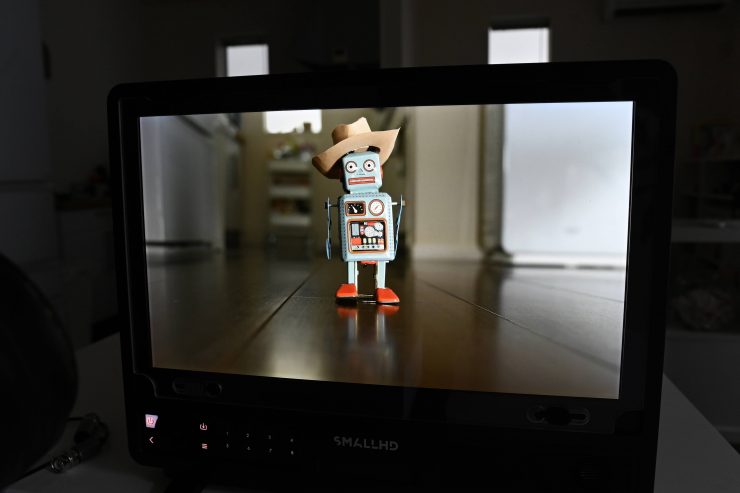
This is a legitimate question because depending on what equipment you are using and what your needs are, the answer could be yes or no.
If you have a UHD monitor attached to the RX unit, then, yes, it probably does make sense to receive a UHD image.
If you are not using a UHD monitor and only looking at material on a 7″ HD screen then transmitting a UHD signal from your camera may at first seem like a complete waste of time. However, if you send a UHD signal and then view it on an HD monitor do you get a cleaner-looking image if you are using image zoom? Well, let’s find out.
Now, as the MARS 4K can only stream at up to 12 Mbps, is this enough to notice any difference between UHD and HD?
Yes, it is. I did some testing sending both UHD and HD signals from a Panasonic S1H to the MARS 4K RX which was hooked up to a SmallHD Cine 13 to see if I could see any big differences.
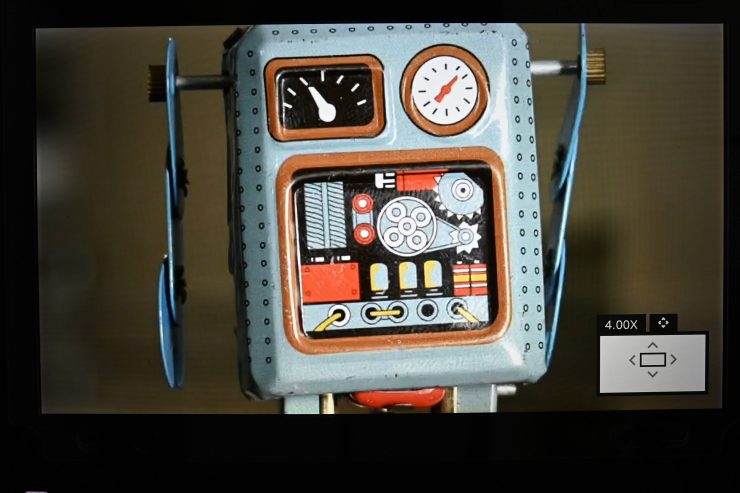
UHD output from the MARS 4K RX 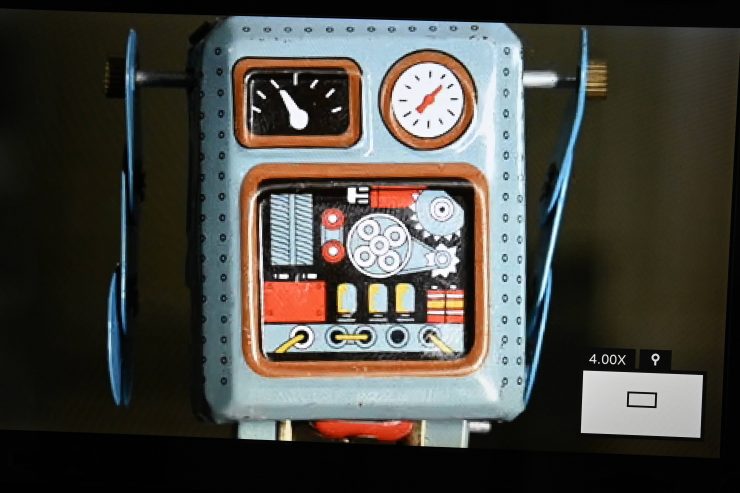
HD output from the MARS 4K
When zooming in there is quite a substantial difference when looking at the UHD image as opposed to the HD image.
If you are not zoomed in there is still a difference, but it isn’t as big. If you are checking critical focus, then the UHD image is far sharper.
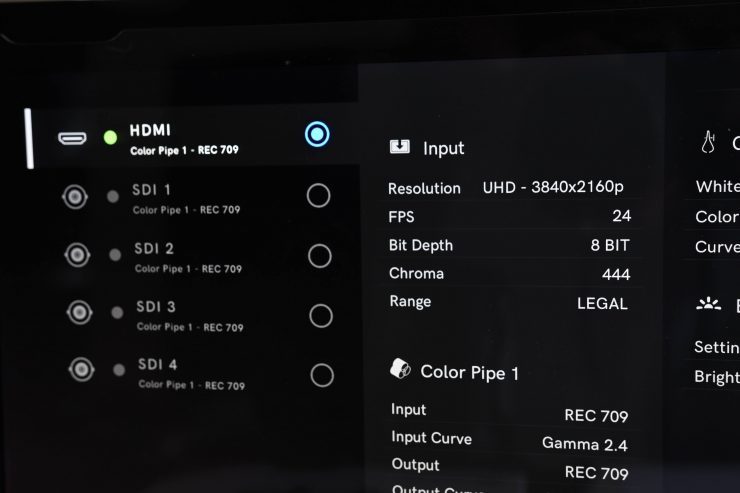
What was a little odd, but this could just be an issue with the SmallHD Cine 13, is that the monitor was telling me that it was receiving an 8-bit signal and not a 10-bit signal.
Ok, but what about if we don’t have a UHD monitor and we are sending a UHD signal to an HD monitor?
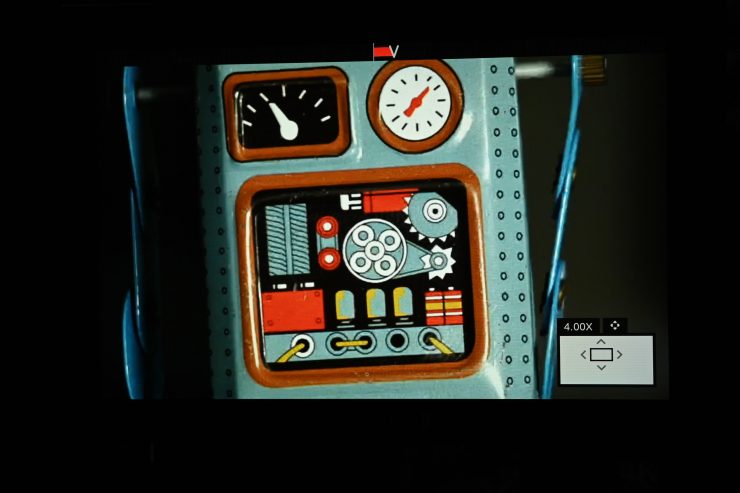
UHD Signal from the MARS 4K RX 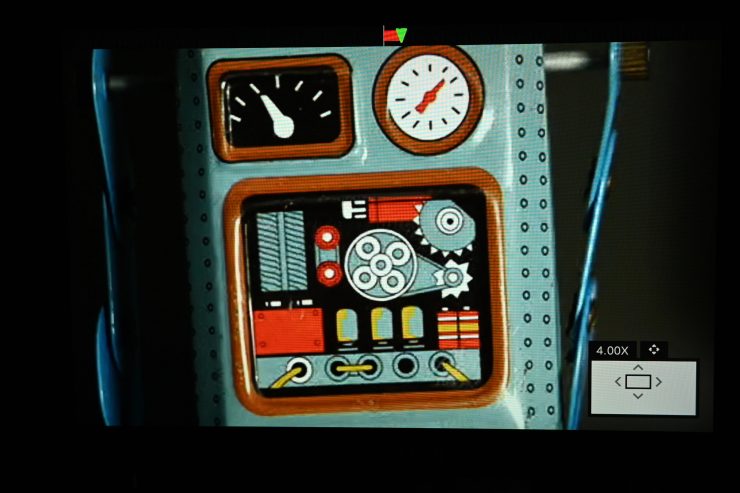
UHD Signal from the MARS 4K RX
Well, if you are zooming in on your image then yes, you can see a difference between the UHD and HD signals. If you are not zoomed in, then the difference is less apparent.
Pricing & availability
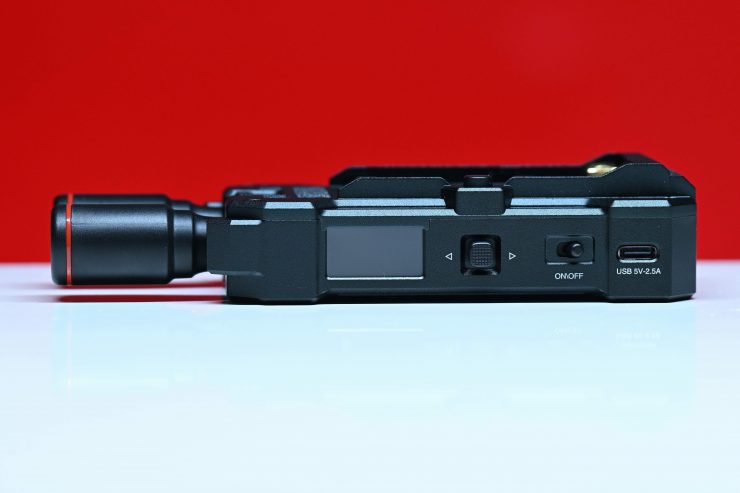
The Hollyland MARS 4K retails for $699 USD. This represents pretty good value for money considering its capabilities.
Competition
The MARS 4K doesn’t really have any direct competition. I’m not personally aware of any other 5GHz compressed system that features a separate TX and RX unit that can send and receive UHD images that is available for anywhere near this price.
Conclusion
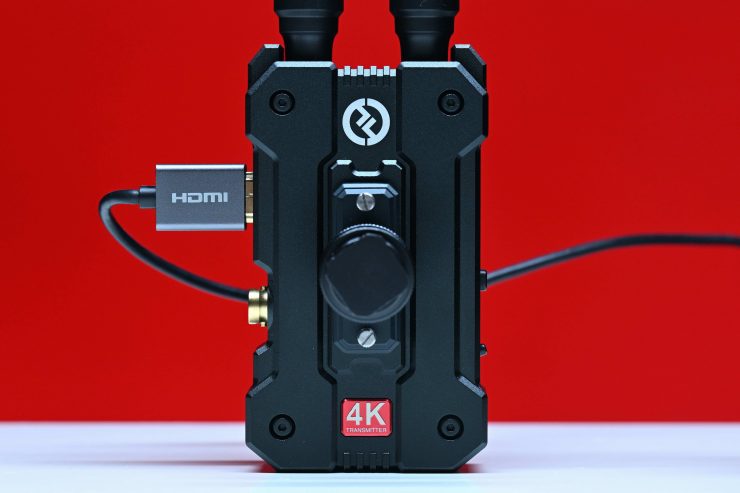
A wireless video transmission system needs to have rock-solid reliability. It also has to not get in your way and be easy to set up and use.
The Hollyland MARS 4K is well built, relatively easy to set up and use, and offers a lot of functionality and features. Having a system that features both SDI and HDMI and the ability to wirelessly transmit UHD or HD images makes this a very versatile product. Having the ability to wirelessly transmit and receive a UHD signal makes a big difference if you need to get critical focus.
The operating range of the system is fairly average, but the image remains stable without dropping out. As soon as you do go out of range and then come back into range it re-establishes a connection straight away.
I like the color screen and the menu is easy to navigate. The app is reasonably good and it is fairly intuitive to use.
Image delay is definitely this product’s Achillies heel and it is something you need to be aware of, however, that is true of just about every compressed wireless video system on the market. My tests showed that image latency actually varies quite dramatically depending on whether you are using the Hollyview app or the RX unit with a monitor. If you are just viewing an image then latency isn’t necessarily a big deal, but if you are trying to pull focus remotely then it is a big deal. What you clearly need to be aware of is that any system that isn’t sending uncompressed video is going to have latency. This is why certain systems cost more than others.
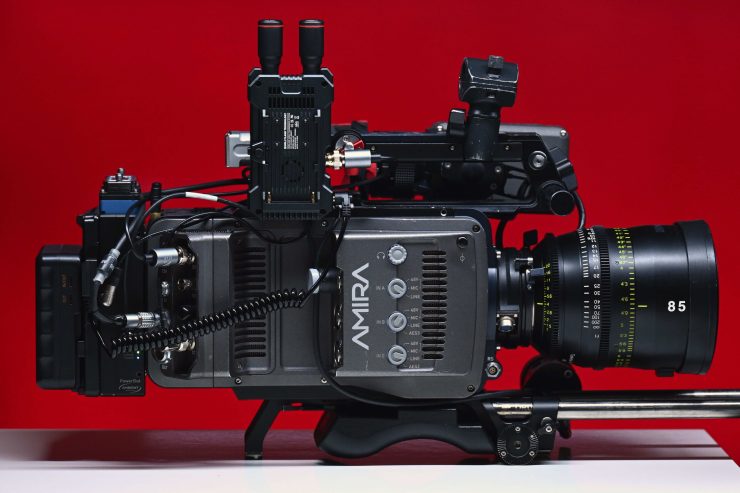
You don’t want to buy a product, regardless of how much it costs, or who it is aimed at, and then find out it doesn’t perform in the way you were expecting. I just want you to be aware of what you should expect and what the limitations are with the MARS 4K.
While wireless video transmission systems have come down in price dramatically in recent years and you can now obtain a pretty good system without having to spend too much money, you are always going to have to spend a lot more money if you are after close to latency-free performance.
Overall, the MARS 4K is a solid offering and it is good to see a company doing something a little bit different from the competition.



